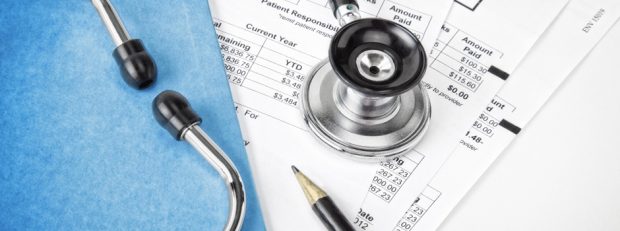Healthcare Patient Billing Expectations
Patients believe every aspect of their healthcare experience contributes to their care, including the medical payment and billing process. And a negative payment incident could impact a patient’s overall impression of a healthcare organization, even if the rest of their experience was positive. According to survey results, patient satisfaction ratings fall by an average of more than 30 percent during the period when the service is performed through the billing process.
So, what exactly do patients want from their medical billing process? This is an incredibly important question, since what many providers fail to understand is that the answer to successful healthcare collections can be found not by asking ourselves what works, but by identifying what patients themselves want from the billing process and adjusting your processes accordingly to meet these needs.
So, just what are some of the features patients want from the billing process?
Patients Want their Bill ASAP
If a medical bill for services rendered isn’t mailed out until moths after the date of service, it’s far too easy for the bill to get lost, forgotten or ignored. Additionally, your patient may not have the funds to pay you by the time the bill arrives, especially if they’ve experienced an unexpected financial crisis.
Try Billing via Text and Email
To address this common patient desire to get their bill ASAP, it’s recommended bills be automated and digitized so that they can be sent efficiently through more modern methods such as text and email. You’d be hard pressed to find a patient without a smartphone or other internet-connected device, so this is no longer a logical reason for not offering digital bills.
Although patients are becoming increasingly comfortable with, and in many cases prefer, electronic payments, still too many practices use an ineffective and expensive paper-based method.
Today, practices can also easily send payment reminders through text straight to their patients’ phones. Patients nearly always have their phones with them, so the probability they will both see and act on the payment reminder is high. In fact, 90 percent of all text messages are read in under three minutes.
Once you send a payment reminder or request, the text message will include a direct link for patients to access a secure payment screen and complete the transaction in a matter of minutes using their smartphone. It’s one of the easiest, most effective ways to send patients their bill.
Put simply, by offering electronic statements, practices are better equipped to respond to patient preferences, giving them clear opportunities to understand what they owe and simple solutions for making prompt payments.
Patients Want Transparency
With the increasing percentage of patients paying out-of-pocket, it’s highly likely that your patients want to know what they are being charged and exactly for what procedures. Patients are now far more likely to question costs that might seem strange to them. Thus, it’s important for your billing office to have information up to date and readily available for the patient’s review.
Patients Want a Variety of Payment Options, Methods

Whether a patient needs a payment plan or takes care of their billing statement in full, it’s also important to give them plenty of payment options. Expectations around payments have quickly changed in the past decade. The evolution of faster and more convenient payment options, such as mobile payment, are growing in popularity.
Estimates show that roughly 36% of smartphone users make a mobile payment at least once every six months. People expect the same easy experience that they receive with other service providers, such as retailers, at their physician’s office.
Note: paper statements are ineffective. Mail is often disregarded or forgotten. Forty percent of healthcare providers fail to collect over $30,000 a year from patients due to this. Practices need to find a better way to collect payments from patients.
Options such as PayPal, Apple Pay and Google Pay are the future of online payments. If your practice isn’t accepting them, you’re competing with the wrong crowd.
Contactless payment options have increased drastically since the star of the pandemic, but frankly they’ve been on the rise in popularity for a number of years now. Your patients will thank you when they no longer have to write a check or write down their card number and stick a stamp to an envelope to simply pay a $20 co-pay.
Patients Want You to Get Rid of the Fancy Lingo
Simplify, simplify, simplify…
Your patient receives a paper bill in the mail 60 days after the original appointment and it reads something like: transient lingual papillitis, resection, 15 min.
Chances are they’re going to spend at least as much time trying to figure out what that bill is for as it took for their dentist to remove their swollen taste bud. So many providers slow down or completely halt the medical billing process simply by sending bills that are hard to understand and packed full of jargon. Skip the medical speak for your patients and it will save you many confused calls.
Patients Want Appointment Reminders
Every year, roughly 25 to 35% of outpatient appointments are missed. Let’s face it, from birthday to medical appointments, people often forget their most important occasions. Understanding this human weakness and anticipating it can make a huge difference.
One way your billing department can help is by sending out appointment reminders to patients regarding their upcoming visits. Doing so can prevent patients from being charged with no-show fees, improve patient outcomes and save patients the trouble of having to reschedule another appointment, all of which lead to a more positive patient experience.
What are the Next Steps?
At the end of the day, your patients are your customers. In order for your practice to stay afloat, you need to find the perfect balance between a process that is inexpensive and one that brings in the payments on a timely basis. As you task yourself with the challenge of creating a patient-centered billing process, keep these patient preferences front-of-mind.
While implementing these processes might seem like a lot of work, ensuring these points are in place contribute to a better patient experience and higher patient satisfaction. Although billing may not seem as important as what happens in the doctor’s office, it is still something your patients will remember and may talk about on social media.
What about a Professional Billing Service?
At Medwave, we care about the people you serve. Our staff supports your medical billing process and will help educate your office on your various options. We offer a variety of choice of payments that allow patients to settle their bill, which increases upfront collections and earns patient trust.
Our comprehensive system has been proven to increase revenue, reduce defaults, and improve the level of patient satisfaction.
Contact us for details.

